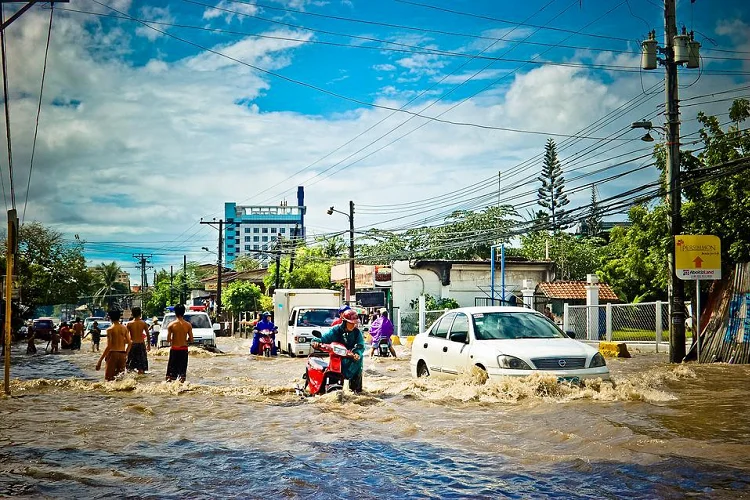Okay, folks, buckle up because I’ve got something truly exciting to share with you today. We’re not just talking about fixing leaky pipes; we're talking about a revolution in how we deal with water damage, powered by some seriously cool tech. Forget the image of guys with squeegees and industrial fans—imagine a world where every drop of water tells a story, and that story helps us build stronger, smarter, and more resilient communities.
The Data Deluge
So, picture this: Portland’s hit by a major water main break. Sixty homes disrupted, localized flooding... sounds like a nightmare, right? But what if, instead of just reacting to the disaster, we could learn from it? What if we could turn that chaos into actionable data that prevents future incidents? That's precisely what's happening, and it's all thanks to the innovative approaches being adopted in the water damage restoration industry.
Companies like Cougar Restoration aren't just patching up leaks; they're using thermal imaging, digital moisture mapping, and real-time monitoring systems to create a comprehensive picture of the damage. They're not only fixing the immediate problem but also gathering crucial data about the extent of the damage, the effectiveness of the restoration techniques, and the vulnerabilities of the infrastructure itself. It's like turning a crime scene into a classroom, except instead of catching criminals, we're catching weaknesses in our systems before they cause catastrophic failures.
And it's not just about big disasters. Even those pesky, hard-to-find underground water leaks that plague homeowners are becoming opportunities for data collection. By analyzing the patterns of these leaks, we can identify areas where aging infrastructure is most at risk and prioritize repairs before major incidents occur. This is proactive problem-solving at its finest, and it's all driven by the power of data.
This reminds me of the early days of the printing press. Before Gutenberg, knowledge was locked away, handwritten and scarce. The printing press unleashed a flood of information, democratizing knowledge and sparking the Renaissance. Similarly, this data-driven approach to water damage restoration is unleashing a flood of insights, democratizing resilience and sparking a restoration renaissance.

Of course, with great power comes great responsibility. As we gather more and more data about our homes and infrastructure, we need to be mindful of privacy concerns and ensure that this information is used ethically and responsibly. What's to stop insurance companies from using this data to deny claims, or municipalities from neglecting repairs in low-income areas? We need to establish clear guidelines and regulations to ensure that this technology benefits everyone, not just a select few. But I digress, because what I saw next truly blew my mind.
Gateway Restoration, out in Phoenix and Chandler, is emphasizing IICRC certification, and while that might sound like alphabet soup, it’s actually a big deal. The Institute of Inspection, Cleaning and Restoration Certification (IICRC) sets the global standards, and that certification? It's not just about technical knowledge; it's about a commitment to following industry-recognized standards that protect both property and health. It means technicians understand the science behind drying techniques, microbial growth prevention, and structural integrity assessment. When I first read that, I just sat back in my chair, speechless.
It's this commitment to data-driven best practices that's turning water damage restoration into a true science. In Arizona, where rapid temperature changes and monsoon seasons can create unique moisture challenges, this level of expertise is absolutely essential. Gateway Restoration Emphasizes IICRC Certification Standards for Phoenix Area Water Damage Services
All Dry Services of Miami is dealing with a surge in emergency flood calls, and I can only imagine the chaos they're facing. But even in the midst of hurricane season, they're using advanced equipment and imaging tech to uncover hidden water damage, reducing the risks of mold and structural weakening. It’s not just about pumping out water; it’s about understanding the long-term effects of that water and taking steps to mitigate them. All Dry Services of Miami Reports Surge in Emergency Flood Calls During Peak Hurricane Season
But let's get to the real game-changer: the convergence of restoration and plumbing. Gateway Restoration isn't just fixing water damage; they're also providing emergency plumbing services, addressing both the source of the damage and its consequences. Imagine the efficiency! Imagine the peace of mind! It's a holistic approach that streamlines the recovery process and prevents future incidents.
The Future is Rising
So, what's the real takeaway here? It's not just about fixing broken pipes; it's about building a more resilient future, one data point at a time. It's about turning disasters into opportunities for learning and growth. It's about using technology to protect our homes, our communities, and our planet. And honestly, that's the kind of breakthrough that reminds me why I got into this field in the first place.
